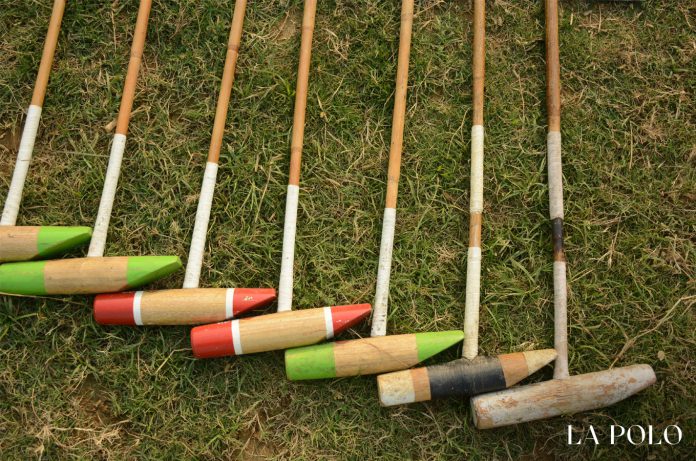The stick with which the ball is hit- more commonly the mallet.
Its all about the length and the weight according to your strength, that you choose your polo stick, well know the mallet,And maybe, maybe if you remember this,
Polo will be your every time bliss
All forms of competition requiring demanding and specialized skills from both, the horse and the rider, resulted in the systematic development of special polo equipment which is the polo mallet. They say if in anyways you are related to a polo player, then the first thing you give in your kid’s hand is a polo mallet. A walking stick to be able to train on foot. It is believed that If a polo stick breaks during a game it is a sign of inefficiency.
The polo stick was an important motif in Islamic heraldry and the Jukandar Polo Master was a popular official in the Caliphs' entourage. The polo stick appears on Chinese royal coats of arms and the game was especially a part of court life in Chinese culture. Polo mallets were of shapes which would appear curious to the current players. In ancient Iran, different from its present-day L-shaped structure, they had heads in the shape of an arc or even straight with equal length on both sides of the shaft. In Japan and in Byzantium, for example, the sticks carried racquet rather than mallet heads. And as mallet technique evolved from dribbling the ball while leaning over the pony’s neck to full swings taken at speed, the advantages to well-mounted players became clear.

BUYING A NEW MALLET FOR YOURSELF?
The principal thing is to avoid buying a polo stick that is whippy towards the handle. A most prominent defect that can ruin any stick in your whole lot of the collection. The commonly used polo stick is the one that ranges from fifteen ounces to one pound; however, the weight of the mallet is a good deal matter of preference. The back of the mallet should have a heavy stick for distance and the light one for quickness and expiditiousness. While you're off purchasing mallets, care should be taken to get absolutely straight sticks and to see that the handle of the stick to the head is always the same. To measure this a model angle can be marked somewhere on the wall and every stick verified so as to preclude the possibility of variation in this important particular.
These sticks are of Malacca and bamboo and have an outer shell which cracks in perpendicular slits. The flat sides to the handle of the mallet are far preferable to round handles. Flat sides parallel to the head enable the rider to recognize the feel of the handle when the mallet is swinging true, a distinct advantage so that you can focus your vision on the ball. When a stick is secured that suits perfectly, it is a good plan to weigh it accurately and register the weight, and then balance it and register the point at which the mallet balances. While selecting, notice the weight and balance simultaneously as mentioned above of the stick that has proven to be the best approximately.





